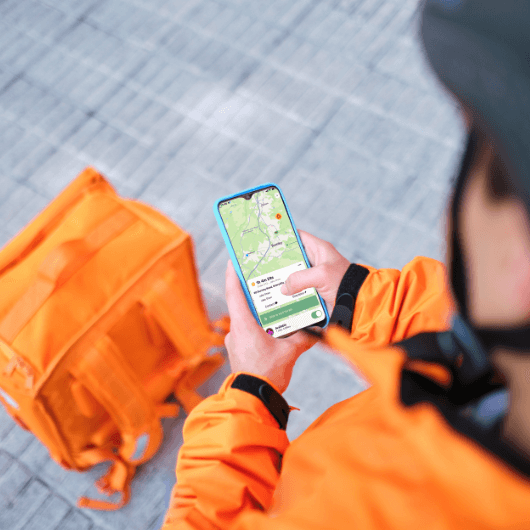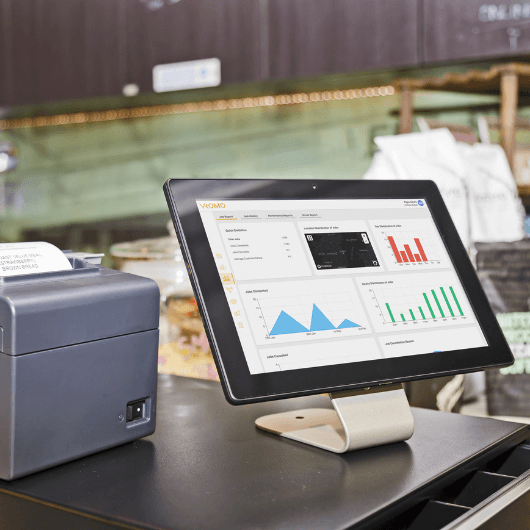
Why employing delivery drivers can help to solve gig economy pitfalls
March 30, 2023
Whether you’re a restaurant operator with one restaurant business or you own thousands of restaurant delivery locations, you’re sitting on a goldmine of delivery data that you can use to transform your food delivery business.

Whether you currently own one, a handful, or thousands of restaurant locations, you’re sitting on a goldmine of real-time delivery data.
Imagine taking a month’s worth of customer delivery data and using it to plan future staffing needs such as whether you need internal delivery drivers or not, menu promotions, store locations and so much more.
Sounds exciting, right?
Exploring customer delivery data can help you to better understand your customer base, and in turn, increase customer satisfaction scores and ultimately, improve the customer experience.
Before long, you’ll get so good at reading your real-time tracking delivery data that you’ll be able to start predicting which of your menu items will be most ordered and on which days.
Who knows, you may even be able to predict the fastest routes drivers should take to reduce delivery times, what food delivery platform or third-party services bring you the most online customers, or better yet forecast operational costs!

The analysis of restaurant data has become more popular as competition grows fiercer in the restaurant industry.
As a result, restaurants and delivery service providers continue to grow and adopt new technologies, such as online ordering, restaurant delivery management software, and route optimization technology to meet their constantly evolving customer service needs.
Restaurant operators are steadily adding in-house delivery teams and third-party delivery providers are continuing to expand offerings.

Did you know that the local delivery market has now surpassed 500 providers? This means that if you want your restaurant to stay competitive within the hospitality industry, you need to harness the power of your in-house delivery data to ensure daily operations are air-tight.
For instance, last-mile delivery tracking and heat maps are just the first steps toward beefing up the delivery experience and getting the most benefit out of your food delivery solution.
Read on to discover the different types of data available through online delivery management software and how it can help enhance your restaurant’s food delivery capabilities.

Data Type: Heat map display of deliveries
Restaurant Benefit: You may discover that you or your delivery partners tend to deliver to one area more than others, helping you plan future restaurant sites, bigger fleet capacity, or even a future ghost kitchen for that area.
Data Type: Distribution of jobs based on days and times
Restaurant Benefit: Helps you to plan the staffing of delivery drivers, backup delivery service providers, and inventory based on your restaurant locations’ busiest days.
Data Type: Cancelled deliveries report
Restaurant Benefit: Helps you compare/contrast against data from the kitchen/restaurant/delivery service providers to see what may have caused the cancellations to prevent future issues with your delivery process.
Data Type: Customer information capture and proof of delivery (image and signature)
Restaurant Benefit: Proving an order was delivered successfully is a regularly occurring food delivery challenge. This type of data is helpful when making deliveries that contain alcohol, or restricted items or in the instance the customer has left a delivery note to ensure the customer is of age and the order has been delivered successfully.

Data Type: Team performance report
Restaurant Benefit: This helps you to accumulate and relay delivery feedback to your drivers as well as understand your team’s delivery performance and how often they made timely deliveries.
Data Type: Driver report
Restaurant Benefit: See how well your drivers performed their delivery tasks and/or if they’ve taken unauthorized breaks, check if they have followed delivery instructions, taken wrong delivery routes, or had other issues during their shift.
Data Type: Order tracking
Restaurant Benefit: During customer communications when you’re actively sending promotional information and branding through an order tracking link, it’s important to know how many times your tracking links were opened, and which customers opened them.

Stop imagining what’s possible with your customer and delivery data.
Start using what you have to grow your team, your brand, and your restaurant’s delivery business.
Let us help you scale your operation in the food delivery space by booking a free demo of our delivery management software today.
Take a look at our advanced features that help you to achieve faster deliveries and better customer engagement.
Better yet, find out exactly how delivery data can benefit YOUR restaurant with our food delivery software!

Read more about the restaurant delivery industry below!

March 30, 2023

February 24, 2023

March 30, 2023